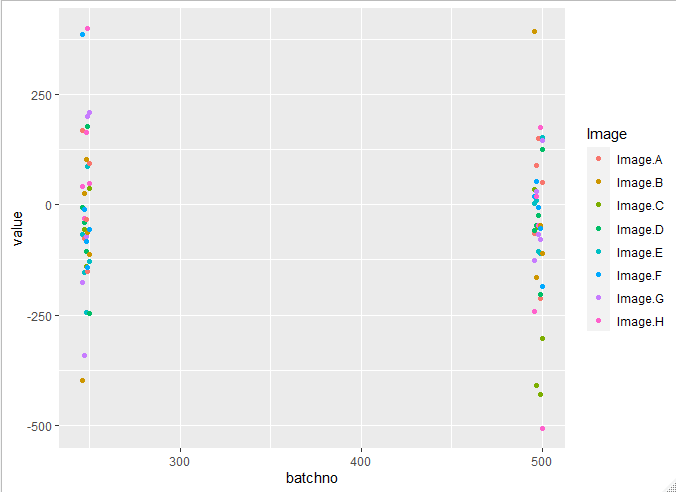I am trying to find the best way to represent my training data. I would like to understand the difference between the predication and true value from one batch to another. This only a sample of the data. The full data contains 1000 records. What is the best graphical representation to use for this please?
data.frame(
Batch.No = c(245L,246L,246L,247L,247L,248L,248L,
249L,249L,250L,250L),
Image.A = c(484,473.4394226,306,480.7792358,557,
578.9783936,613,460.1863403,612,408.3404541,315),
Image.B = c(431,413.6788025,812,509.5707397,484,
405.3319702,304,445.0266418,507,570.5655518,683),
Image.C = c(802,471.8282776,479,540.9875488,598,
447.3132935,586,472.5936584,295,432.6842041,396),
Image.D = c(467,473.2600708,479,410.3531189,451,
410.8186035,516,419.1672668,241,474.9749451,722),
Image.E = c(430,421.0501709,488,417.0779724,571,
465.0914917,710,519.2244263,433,423.9597473,552),
Image.F = c(598,419.3078613,34,437.076416,447,
469.7338257,553,519.0509033,661,449.4110718,505),
Image.G = c(396,444.025116,619,460.428833,802,
434.075592,507,462.6940918,263,485.8326111,276),
Image.H = c(571,452.5244141,411,397.3113708,429,
506.5319214,343,433.348938,34,423.3520813,376),
Value.Type = as.factor(c("Actual","Pred",
"Actual","Pred","Actual","Pred","Actual","Pred",
"Actual","Pred","Actual"))
)data.frame(
Batch.No = c(495L,496L,496L,497L,497L,498L,498L,
499L,499L,500L,500L),
Image.A = c(263,440.2657776,505,391.7754822,304,
378.2554321,229,407.1863403,619,365.4620361,315),
Image.B = c(229,427.150177,34,406.7923279,571,
378.7658997,429,432.6651611,479,396.3605042,507),
Image.C = c(375,422.8170776,389,402.9620361,812,
377.5062561,429,381.6202393,812,419.3835144,722),
Image.D = c(160,429.7803345,488,403.2651367,451,
442.1589355,467,456.796814,661,418.9455566,295),
Image.E = c(468,469.8259583,468,405.3244629,396,
452.3336792,557,488.3843689,598,428.8172607,276),
Image.F = c(447,448.9035339,431,484.988739,433,
390.5343933,396,459.8133545,513,386.892334,571),
Image.G = c(602,557.2020874,683,404.8573608,375,
400.1952515,467,388.64151,467,409.2952271,263),
Image.H = c(431,468.7738342,710,502.2818604,484,
466.7520752,513,400.0844116,225,373.730011,880),
Value.Type = as.factor(c("Actual","Pred",
"Actual","Pred","Actual","Pred","Actual","Pred",
"Actual","Pred","Actual"))
)

